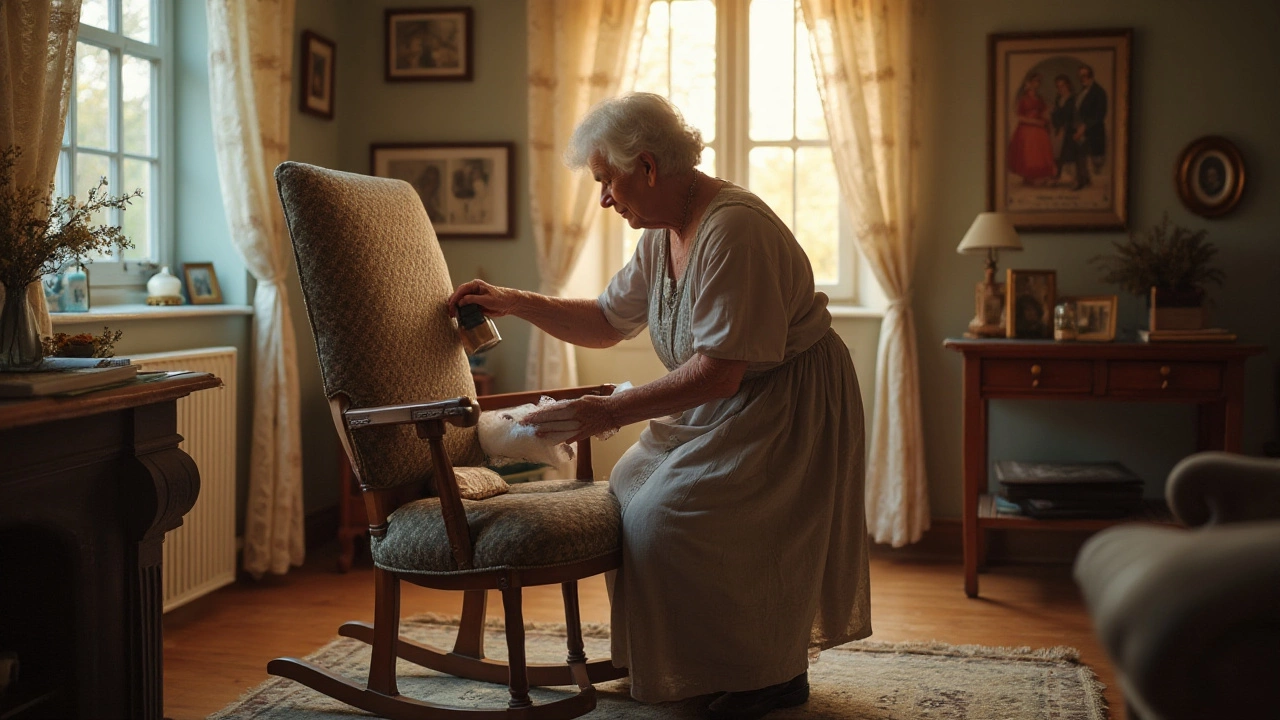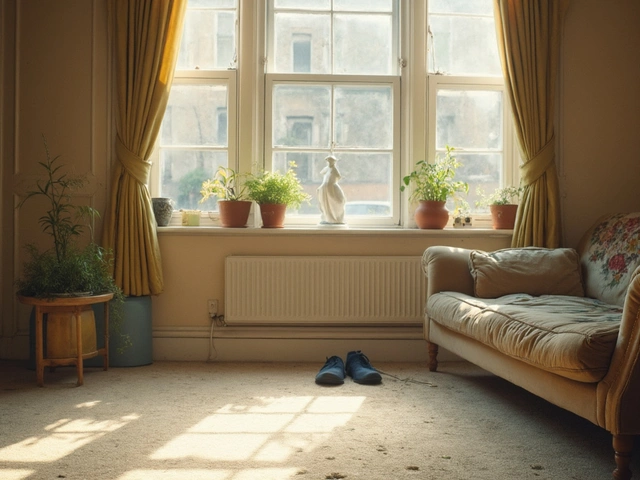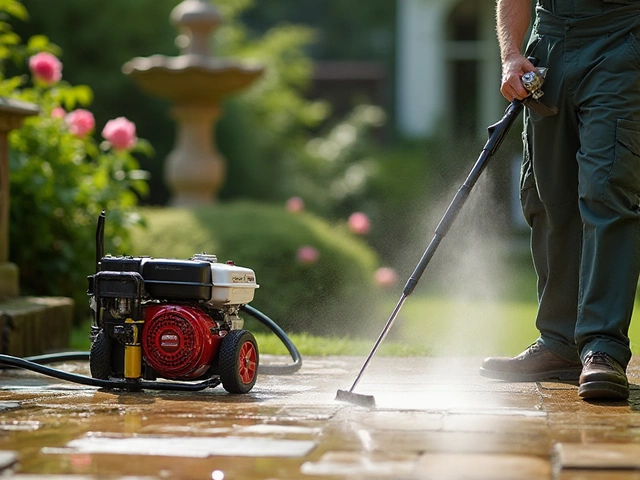Upholstery brings a touch of elegance and comfort to any home, but cleaning it can be tricky, especially when it can't be tossed in the washing machine. It's important to approach this task with the right knowledge and tools to protect your fabrics.
Often, the key lies in understanding the fabric and its specific care requirements. Upholstery can come with a variety of tags, like S or W, indicating how it should be cleaned. Knowing these details can save you from irreparable damage.
Fortunately, there are numerous household solutions and methods that can help tackle dirt and stains effectively without the risk of over-saturating your upholstery. From simple home remedies to effective dry-cleaning techniques, you have an array of options at your disposal.
With a mix of vigilance, regular maintenance, and some clever tricks, your upholstery can remain a centerpiece of style and comfort in your home.
- Understanding Upholstery Labels
- Homemade Cleaning Solutions
- Dry Cleaning Techniques
- Maintaining Upholstery Freshness
Understanding Upholstery Labels
Every piece of upholstered furniture in your home carries a story, not just with its design but also in the care it requires. This narrative is often encoded in little yet essential symbols known as upholstery labels. These labels are a guideline to ensure your beloved furnishings continue to look as fresh as the day you brought them home. Typically located on the underside of a cushion or the base of the furniture, these labels contain a wealth of knowledge crucial for maintaining your upholstery’s longevity.
When deciphering upholstery cleaning labels, familiarize yourself with lettered codes such as ‘W’, ‘S’, ‘WS’, and ‘X’. Each letter represents a unique cleaning method. 'W' signifies that water-based cleaners are safe, making it relatively straightforward to clean minor spills with a mild detergent solution. 'S', on the other hand, indicates that only solvent-based cleaners are suitable. This typically applies to more delicate or vintage fabrics that may shrink or become damaged with water. Furniture with the 'WS' label affords a bit of flexibility, allowing for both water and solvent-based methods, making it a versatile choice for varying lifestyles.
Then there's the 'X' label, which is the trickiest of them all. This label recommends no liquid solutions; instead, cleaning should be limited to vacuuming or light brushing to avoid any damage. It is paramount to understand these labels as misuse of cleaning products can lead to irreversible damage to the fabric’s fibers or finish. It’s not just about avoiding stains but also about maintaining texture and color vibrancy over time.
Special Considerations for Non-Washable Upholstery
Beyond the basic codes, consider any additional tags which may include instructions related to colorfastness or special warnings. It’s worth noting that some materials, such as leather, may have their own unique care requirements that veer away from the labeled instructions. Careful examination of these labels helps you choose the precise cleaning supplies and tools, conserving both your time and the longevity of your furniture.In the realm of fabric care, this knowledge becomes even more significant in households with children or pets, where accidents are more likely. Being proactive in understanding your upholstery’s needs not only keeps it beautiful but also saves money on professional cleaning services. As Barbara Richardson, a widely respected interior designer, points out, "Knowing how to interpret these symbols is the first step towards making your home a reflection of enduring style."

Homemade Cleaning Solutions
When it comes to tackling dirt and stains on upholstery that can't be washed, you might be surprised at how many effective solutions exist right in your kitchen. Everyday ingredients like vinegar, baking soda, and liquid dish soap can be the superheroes your non-washable furniture needs. By understanding the properties of these ingredients, you can create reliable cleaning agents that combat common upholstery issues without causing harm.
One popular concoction utilizes white vinegar, which is celebrated for its deodorizing and mild disinfectant properties. Mix one part vinegar with one part water in a spray bottle; this solution can be sprayed lightly over stained areas to lift dirt and neutralize odors. It's essential to blot the area with a clean cloth rather than rubbing, as this prevents the stain from setting deeper into the fabric fibers. Remember, vinegar's scent dissipates as it dries, leaving no lingering smell behind.
"Vinegar has been used for centuries in cleaning. It’s considered a safe and effective alternative to harsh chemical cleaners," suggests the Environmental Working Group.
Baking soda is another household item that can work wonders on upholstery. Its absorbent qualities make it ideal for removing grease and odors. Sprinkle a generous amount over the stained area and let it sit for several hours, overnight if possible. This gives the baking soda time to absorb excess oils and smells. Vacuum up the residue afterward, and you’ll notice a difference in freshness. For a deeper clean, you can mix baking soda with equal parts water for a paste to apply directly to the stain.
In cases where you’re dealing with tougher stains, especially on fabrics labeled with water-based cleaners, combine a quarter cup of warm water with a tablespoon of liquid dish soap and two tablespoons of white vinegar. Mix this into a light froth and, using a soft-bristled brush, apply it to the stain. This gentle solution helps break down grime without adverse effects on delicate fabric. Once the stain is treated, use a damp cloth to blot away any soap residue, ensuring no streaks remain. Let the fabric dry completely before use.
Whether navigating wine spills or pet mishaps, these homemade mixes prove invaluable for maintaining upholstery. Armed with these tips, not only does cleaning become cost-effective, but it also empowers you with tools that are kinder to the environment. Just remember to always test a small, inconspicuous area first to ensure colorfastness, especially since some fabrics may react unexpectedly.

Dry Cleaning Techniques
Tackling upholstery cleaning for non-washable fabrics doesn't mean you are confined to a professional cleaning service. Dry cleaning techniques can be an incredibly effective way to maintain the cleanliness of your furniture without involving a hint of moisture. This method is often recommended for delicate fabrics, which could be adversely affected by liquids. The basic principle involves using granules or soft powders that absorb dirt, moisture, and odor. These cleaners can be sprinkled over the furniture, gently agitated with a brush, and then thoroughly vacuumed off, bringing grime and dust along with them. It's always important to test any cleaning agent on an inconspicuous area first to ensure it won't damage the fabric.
For those interested in more sophisticated methods, environmentally friendly dry cleaning solvents are now available and popular for use on upholstery. These solvents can often come in spray or powder form. Readers should remember to ventilate the area well during use. Mueller & Sons Cleaning Solutions state that, "Dry cleaning solvents are designed to clear stubborn stains without compromising fabric integrity when used properly." This echoes the feedback from many users who find such products effective. Historically, household items like baking soda have also served as cleaning miracles. Sprinkling a layer on your furniture and letting it sit for about 15 minutes before vacuuming is another strategy old as time yet still praised today.
The choice between DIY and store-bought dry cleaning methods can depend on the extent of the stain and your upholstery's sensitivity. For consistent upkeep, regular vacuuming paired with occasional dry powder or solvent treatment can keep your upholstery fresh and looking inviting year-round. For exemplary results, an upholstery attachment on your vacuum cleaner can help reach those tight corners, where dust tends to settle unseen. Drawing from experience, some folks integrate essential oils into their cleaning routine for a fragrant finish. As always, keeping up with regular maintenance ensures fewer emergency clean-ups and extends the life of your upholstered pieces.

Maintaining Upholstery Freshness
Maintaining the freshness of your upholstery is not just about aesthetics; it's about prolonging its life and ensuring your home environment remains inviting. The first step to keeping your upholstery in pristine condition is regular care. Vacuuming thoroughly at least once a week is crucial. This helps in removing dirt and debris, which can become embedded in the fabric over time. These particles, if not removed, act like sandpaper against the fabric, causing it to wear out prematurely. Use the right attachment on your vacuum cleaner to reach those tricky crevices effortlessly.
Next, consider rotating the cushions regularly. This seemingly simple act can drastically reduce uneven wear and the formation of dips. It also offers a good opportunity to check for spots or stains that may have formed unknowingly over time. Spot cleaning should be done immediately when a spill occurs. Using a clean, slightly damp cloth, blot instead of rub, as rubbing can push the stain deeper into the fabric. Ensure you test any cleaning solution or water on a hidden part of the upholstery to prevent discoloration.
"Your home should tell the story of who you are, and be a collection of what you love." — Nate Berkus
Protecting your furniture from direct sunlight is another key factor in maintaining its vibrancy. Exposure to UV rays can lead to the fading of colors and weakening of material fibers. If possible, position your furniture away from windows or use curtains and blinds to control the amount of sunlight that enters your space. During festive seasons, when furniture is subjected to more use, consider applying a fabric protection spray. These products coat your upholstery with a protective layer, making it more resistant to spills and stains. It's advisable to reapply such a product every six months, or more frequently if your furniture is heavily used.
Deodorizers can be helpful in keeping your upholstery smelling fresh. However, be cautious not to overuse them because they can mask odors instead of eliminating them. Instead, opt for natural alternatives like baking soda, which can be sprinkled over the fabric and vacuumed away after a few hours. Baking soda is effective in absorbing odors without leaving any residue or additional scent behind. For an extra touch, mix essential oils with water and lightly mist the upholstery for a gentle, natural fragrance.
Regular professional cleaning is also recommended. While home techniques are beneficial for everyday maintenance, professional cleaning ensures a deep cleanse, reaching parts and using equipment that is typically not available at home. Depending on your lifestyle and the level of usage, plan for a professional service once or twice a year. Keeping your furniture in a consistently dry environment helps maintain its integrity, as humidity can lead to mold growth and material degradation.
| Frequency | Task |
|---|---|
| Weekly | Vacuuming and cushion rotation |
| Monthly | Deodorizing with baking soda |
| Bi-annually | Professional cleaning service |
Ultimately, maintaining upholstery freshness is a blend of small, regular actions and informed choices about fabric care. By incorporating these practices into your cleaning routine, you ensure your non-washable upholstery stays fresh and beautiful, echoing the warmth and charm of your home for years to come.




